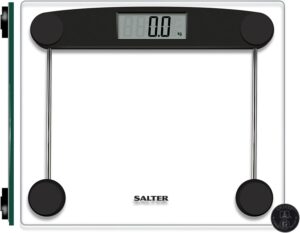Masticating Juicer Machine Review
 Get ready to upgrade your morning routine with the Masticating Juicer Machine for Whole Fruits and Vegetables. This cold press slow juicer is designed to extract the maximum nutrients and juice from your favorite fruits and veggies. Its low-speed rotation ensures minimal heat accumulation, oxidation, and foam, resulting in a juice that is packed with vitamins, enzymes, minerals, and nutrients.
Get ready to upgrade your morning routine with the Masticating Juicer Machine for Whole Fruits and Vegetables. This cold press slow juicer is designed to extract the maximum nutrients and juice from your favorite fruits and veggies. Its low-speed rotation ensures minimal heat accumulation, oxidation, and foam, resulting in a juice that is packed with vitamins, enzymes, minerals, and nutrients.
With its wide-mouth 80mm feeding chute and powerful 200W motor, you can save time by juicing whole fruits and vegetables without having to cut them into small pieces. The reverse function prevents any blockages and makes cleaning a breeze. Plus, the quiet motor ensures a peaceful morning without disturbing your family or neighbors. Say goodbye to store-bought juices and hello to a daily cup of fresh, healthy juice with this incredible juicer.
Xiaomi Smart Band 7 Activity Tracker Black Review
![]() Get ready to upgrade your fitness journey with the Xiaomi Smart Band 7 Activity Tracker Black. This sleek and stylish device features a 1.62″ high resolution AMOLED display that provides crystal-clear visuals for effortless navigation.
Get ready to upgrade your fitness journey with the Xiaomi Smart Band 7 Activity Tracker Black. This sleek and stylish device features a 1.62″ high resolution AMOLED display that provides crystal-clear visuals for effortless navigation.
With SpO₂ monitoring throughout the day and heart rate monitoring, you can stay on top of your health and make informed decisions about your well-being. Whether you’re a fitness enthusiast or just looking to lead a more active lifestyle, the Xiaomi Smart Band 7 is here to help you reach your goals.
Himaly Mini Exercise Bike Review
 Get ready to take your fitness routine to the next level with the Himaly Mini Exercise Bike Portable Pedal Exerciser. This versatile piece of equipment allows you to target multiple muscle groups with its arm and leg exercises.
Get ready to take your fitness routine to the next level with the Himaly Mini Exercise Bike Portable Pedal Exerciser. This versatile piece of equipment allows you to target multiple muscle groups with its arm and leg exercises.
You can easily adjust the resistance levels to fit your fitness goals and track your progress with the digital LCD display. Plus, its lightweight and portable design means you can take it with you wherever you go. Assembly is a breeze, so you can start working out in no time. Say goodbye to limited space and hello to a convenient and effective workout solution.
Salter 9208 BK3R Compact Electronic Bathroom Scale Review
 Looking for an easy-to-use and compact bathroom scale? Look no further than the Salter 9208 BK3R Compact Electronic Bathroom Scale. With its simple and contemporary design, this scale is perfect for any interior. Made with a toughened glass platform, it ensures exceptional sturdiness and safety.
Looking for an easy-to-use and compact bathroom scale? Look no further than the Salter 9208 BK3R Compact Electronic Bathroom Scale. With its simple and contemporary design, this scale is perfect for any interior. Made with a toughened glass platform, it ensures exceptional sturdiness and safety.
The large LCD screen provides easy-to-read measurements, which can be displayed in either imperial or metric units. No need to press any buttons before use, simply step on the scale to receive your personalized weight readings. With a maximum capacity of 180 Kg, this scale is suitable for the whole family and is user-friendly for all ages. Trust in Salter to provide a reliable and accurate bathroom scale for your daily needs.
Keto Fat Burn MAX Strength Diet Pills Review
 Are you ready to start losing weight fast and achieve your weight loss goals? Look no further than Keto Fat Burn MAX Strength Diet Pills! With this powerful weight loss management supplement, you can boost your body’s natural fat burning levels and burn more fat faster. This scientifically formulated advanced combination of ingredients will help you meet and beat your ketogenic health goals.
Are you ready to start losing weight fast and achieve your weight loss goals? Look no further than Keto Fat Burn MAX Strength Diet Pills! With this powerful weight loss management supplement, you can boost your body’s natural fat burning levels and burn more fat faster. This scientifically formulated advanced combination of ingredients will help you meet and beat your ketogenic health goals.
Unlike other keto products, Keto Fat Burn MAX gets you into ketosis faster and helps you stay there longer. Imagine the potential of boosting your fat burning and achieving the body you’ve always dreamed of. Don’t delay this important purchase, start your weight loss journey today by ordering Keto Fat Burn MAX!
CINY 3D Roller Face Massager Review
 Experience the ultimate relaxation and rejuvenation with the CINY 3D Roller Face Massager. This innovative beauty tool is designed to sculpt and lift your face, body, and even your back, providing a 360-degree rotation massage for a complete pampering session. Made of eco-friendly ABS polymer, this massager is not only safe and durable, but it also promotes blood circulation, eliminates excess fat, reduces wrinkles, and helps to eliminate edema.
Experience the ultimate relaxation and rejuvenation with the CINY 3D Roller Face Massager. This innovative beauty tool is designed to sculpt and lift your face, body, and even your back, providing a 360-degree rotation massage for a complete pampering session. Made of eco-friendly ABS polymer, this massager is not only safe and durable, but it also promotes blood circulation, eliminates excess fat, reduces wrinkles, and helps to eliminate edema.
With its unique Y-design and kneading massage, it effectively stimulates the skin and lymphatic system, leaving you with smoother and firmer skin. Plus, it’s easy to carry and waterproof, making it convenient for use anywhere, anytime. Say hello to a more compact and revitalized you with the CINY 3D Roller Face Massager.
PROIRON Kettlebell Weight Review
 Looking to level up your home gym equipment? Look no further than the PROIRON Cast Iron/Neoprene Coated kettlebell Weight. With its sturdy cast iron core, soft neoprene coating, and anti-slip wide handle, this kettlebell is perfect for all your fitness and weight training needs.
Looking to level up your home gym equipment? Look no further than the PROIRON Cast Iron/Neoprene Coated kettlebell Weight. With its sturdy cast iron core, soft neoprene coating, and anti-slip wide handle, this kettlebell is perfect for all your fitness and weight training needs.
Available in a range of weights from 4kg to 24kg, these kettlebells are suitable for beginners and advanced users alike. Not only are they compact and easy to use, but they also come color-coded for easy weight selection. Whether you’re looking to strengthen your core or amp up your strength exercises, these kettlebells are the versatile home gym equipment you’ve been searching for.
TechStone Resistance Bands Set Review
 Get ready to take your workouts to the next level with the TechStone Resistance Bands Set for Men and Women. This pack of 5 different resistance levels elastic bands is the perfect fitness equipment for your home gym or long exercise workouts. Made with natural latex material, these bands are strong and durable, ensuring that they will last for years to come.
Get ready to take your workouts to the next level with the TechStone Resistance Bands Set for Men and Women. This pack of 5 different resistance levels elastic bands is the perfect fitness equipment for your home gym or long exercise workouts. Made with natural latex material, these bands are strong and durable, ensuring that they will last for years to come.
With resistance levels ranging from 4.5 kg to 45 kg, you can easily adjust the weight to fit your desired level, whether you’re just starting out or an experienced gym-goer. These bands are not only portable, but they also provide low-impact exercises that put less pressure on your joints. Use them for physical therapy, rehabilitation, pull-ups, stretching, strength training, powerlifting, and more. With over 150 different exercises possible, you’ll be able to target and work any muscle group in your body. So why wait? Grab your TechStone Resistance Bands Set today and start achieving the results you’ve always wanted!
Whey Protein Choco Bueno 2000g Review
 If you’re looking to enhance your fitness routine and optimize your performance, look no further than Whey Protein Choco Bueno. This delicious and nutritious product is a game-changer when it comes to achieving your health and fitness goals.
If you’re looking to enhance your fitness routine and optimize your performance, look no further than Whey Protein Choco Bueno. This delicious and nutritious product is a game-changer when it comes to achieving your health and fitness goals.
Manufactured and distributed in the UK by EFECTIV NUTRITION, Whey Protein Choco Bueno is the perfect addition to your diet, providing you with high-quality protein and a delightful chocolate flavor. With its convenient 2000g size, you’ll have plenty to fuel your workouts and recovery. Say goodbye to bland protein shakes and hello to a tasty treat that will support your fitness journey.
 Are you looking for a versatile and effective fitness equipment that you can use at home? Look no further than the Qicool Pilates Bar Set! This all-in-one kit comes with 4 adjustable resistance bands, allowing you to customize your workout intensity based on your fitness level. It’s designed to suit men and women of all sizes, weights, and ages, making it perfect for everyone in your household.
Are you looking for a versatile and effective fitness equipment that you can use at home? Look no further than the Qicool Pilates Bar Set! This all-in-one kit comes with 4 adjustable resistance bands, allowing you to customize your workout intensity based on your fitness level. It’s designed to suit men and women of all sizes, weights, and ages, making it perfect for everyone in your household.